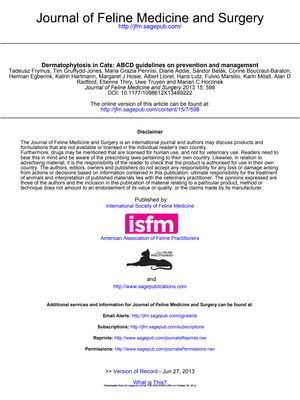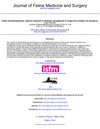Dermatophytosis in Cats: Prevention and Management Guidelines
June 2013
in “
Journal of feline medicine and surgery
”

TLDR The document says to treat cat fungal infections with medicine and clean the environment, noting that cats without symptoms can still spread it to humans.
The document from 2013 provides guidelines on the prevention and management of dermatophytosis in cats, a fungal infection caused by Microsporum canis. It is prevalent in kittens and immunosuppressed adult cats, with transmission occurring through direct or indirect contact. Diagnosis involves Wood's lamp examination, microscopic detection, or culture, with culture being the most reliable method. Treatment includes systemic therapies like itraconazole and topical treatments such as enilconazole or miconazole, alongside environmental decontamination. No effective vaccine is available, and the document highlights the importance of combining treatments and environmental cleaning, especially in shelters and catteries. The document also notes that many adult cats may carry the disease without symptoms and that it can be transmitted to humans.




